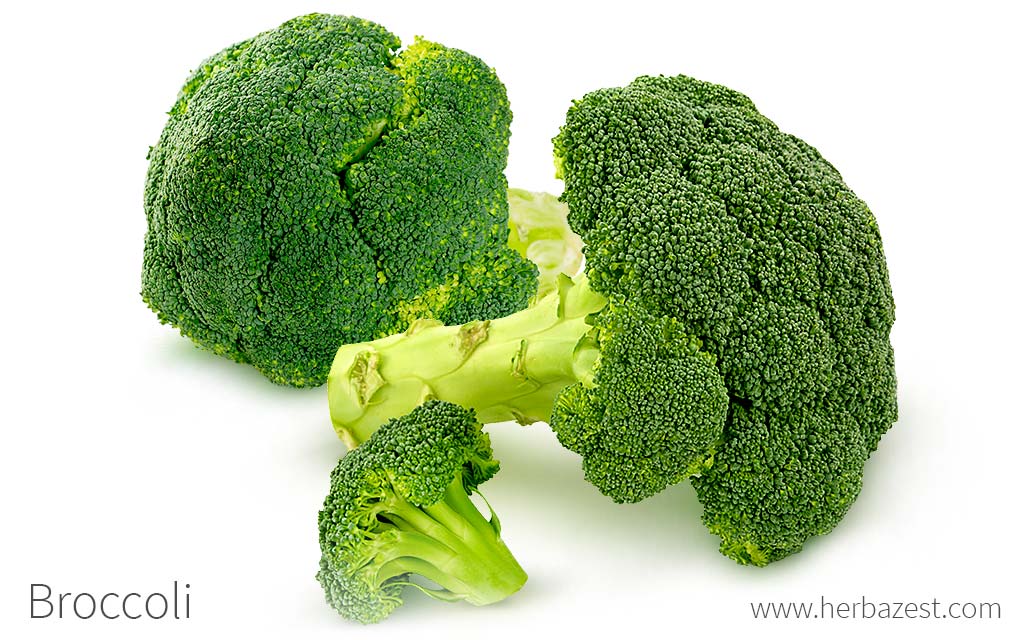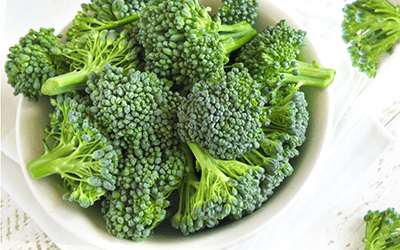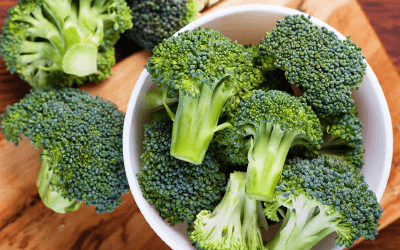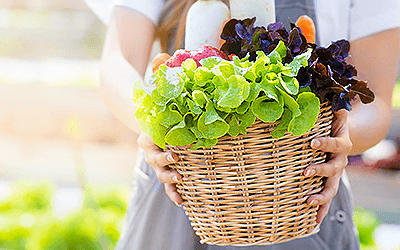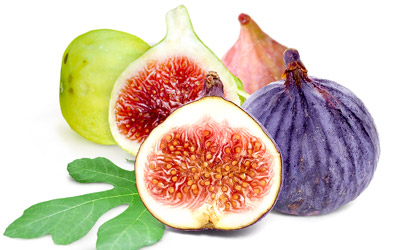Humankind has enjoyed broccoli for hundreds of years. This vegetable - as it is known today - is believed to have been introduced to the rest of the world by the Italians; in fact, its name derives from the Italian word brocco, meaning "sprout" or "shoot." While its sweet taste and crunchy texture are enjoyed in many dishes, broccoli is also rich in bioactive compounds that are highly beneficial for the human health.
Broccoli Medicinal Properties
- Medicinal action Antibacterial, Immunoprotective
- Key constituents Sulforaphane, isothiocyanates, glucosinolates and phenols
- Ways to use Capsules, Hot infusions/tisanes, Tincture, Essential oil
- Medicinal rating (3) Reasonably useful plant
- Safety ranking Safe
Health Benefits of Broccoli
Broccoli has been a food staple for humanity since ancient times, and its is widely known for its nutritional benefits; however, broccoli's medicinal properties have also been traditionally used to treat a number of conditions. The health benefits of broccoli, some of them corroborated by scientific studies, include:
Relieving arthritis symptoms. Broccoli has been shown to slow the deterioration of cartilage in joints, which is one of the reasons for pain and increasing weakness in adults as they age.
Supporting the immune system. Broccoli is a powerhouse of essential nutrients, such as vitamins, minerals and antioxidants, which help protect the body, prevent diseases, and support general health.
Combating bacterial diseases. The broccoli's stem is particularly rich in antibacterial substances, which have proven especially effective in treating internal infections.
How It Works
A major constituent present in broccoli is sulforaphane. Studies have revealed that this compound, responsible for the most remarkable broccoli's benefits, may be useful in preventing and treating arthritis. When broccoli is eaten, sulforaphane is released and used by the body to block enzymes that can destroy cartilage in the joints.1
Other noteworthy compounds of broccoli are isothiocyanates, which can be used to combat harmful bacteria such as Escherichia coli and Kiebsiella pneumonia.2
Moreover, the antioxidant and immunity-boosting broccoli's benefits are attributed to the presence of glucosinolates and phenols. These substances work in different ways to support general health, and their combined action helps strengthen the immune system so that it can fight compounds known as free radicals, which are not only generated by the body, but can also come from bad habits, such as smoking, a poor diet, or excessive alcohol consumption.3
Other herbs with antibacterial properties are lemon and parsley, whereas bell pepper and eggplant also provide immune-boosting benefits.
Broccoli Side Effects
Broccoli is not known to have any side effects when consumed in dietary amounts, and it is considered generally safe as long as it is enjoyed as part of a balanced diet. However, excessive consumption can cause gas, stomach discomfort, nausea and vomiting.
Those with sensitive skin may experience irritation when handling fresh or dried broccoli or using it for topical treatments.
Broccoli Cautions
Broccoli, as well as other cruciferous vegetables, contains small amounts of natural thyroid stimulant compounds, which in large quantities may cause goiter disease, a health condition characterized by an abnormal enlargement of the thyroid gland. People with thyroid conditions should consume broccoli in moderation and avoid supplemental forms of the herb.
People who suffer from irritable bowel syndrome (IBS) must be aware that consuming cruciferous vegetables, such as broccoli, cauliflower, and cabbage, may worsen this condition by causing gas, abdominal pain, bloating, and changes in bowel habits.
No dangerous interactions have been reported for broccoli during pregnancy; however, while it is deemed as safe and even recommended as part of a healthy diet, its effects when taken in medicinal amounts have not been well studied. As such, before starting any supplemental form of this or any other herb, it is strongly advised to consult with a healthcare professional.
Those who are taking medication for any serious conditions should seek medical advice before regularly consuming broccoli supplements.
Broccoli Nutrition
The impressive nutritional profile of broccoli makes it a healthy food choice, and a serving of 80 grams (2.8 ounces) counts as one of the recommended five portions of fruits and vegetables a person should consume each day.
Broccoli is low in calories and carbohydrates; it also provides fair amounts of plant based protein and good levels of dietary fiber.
Broccoli ranks among the top 20 foods in regards to ANDI score (Aggregate Nutrient Density Index), which measures vitamin, mineral, and phytonutrient content in relation to caloric content.
Broccoli contains a wide array of essential compounds that benefit the human body. These include good amounts of essential minerals, all crucial for many vital functions, such as magnesium, phosphorus, potasium, copper, and manganese.
The most abundant nutrient in broccoli is vitamin K (phylloquinone), a fat-soluble compound that improves blood clotting and has been linked to higher bone mineral density, thus reducing the risk of fractures.
Broccoli is an excellent source of other vitamins, namely vitamin C (ascorbic acid), a well-known immunity booster, which also plays a major role in iron and calcium absorption, helping prevent anemia and promoting strong bones; and vitamin B9 (folate), necessary for fetal development as well as for red blood cells production and proper iron metabolism. This cruciferous vegetable also provides good amounts of other B group vitamins, such as B5 (pantothenic acid) and B6 (pyridoxine), along with the antioxidant vitamin E (phylloquinone).
The nutritional value of broccoli is rounded by adequate amounts of vitamin B2 (rivoflavin), choline, and vitamin A, as well as small quantities of many other essential nutrients.
100 grams of cooked broccoli provide only 35 calories, as well as 5% and 12% of plant-based protein and dietary fiber, respectively.

How to Consume Broccoli
- Edible parts Fruit, Leaves, Stem, Oil
- Edible uses Flavoring, Oil
- Taste Mild
The most common method of consuming broccoli is in its cooked or raw, fresh form. Broccoli is eaten all over the world and featured as an integral ingredient of many meals. Raw, it can often be seen salads or as a snack with a healthy dip. Cooked, it appears in stir-fries, casseroles, pasta dishes, and as a side to accompany various wholesome meat and potato-based foods. However, some herbalists are known to suggest alternative forms of intake, which arguably can be more suited for treating specific conditions.
All components of the broccoli plant are edible; in fact, the leaves and stem are thought to contain more medicinal properties than the widely popular florets.
Natural Forms
Raw. Although it is may be difficult to digest in this form, broccoli can often be seen as part of salads or even as a healthy snack.
Cooked. This is arguably the most popular way of consuming and reaping broccoli health benefits. This vegetable can be prepared in a myriad of ways, from stews and soups to cooked salads.
Frozen. In a similar fashion to spinach, the frozen florets of broccoli are a popular way of consumption, since they have a longer shelf life and offer the same health benefits as the fresh produce.
Dried. Once broccoli florets and stalks are dehydrated, they can be consumed as a healthy, low-calorie snack. Dried broccoli has a long shelf life, and it is sometimes suggested for rice- or noodle-based dishes.
Juice. Broccoli juice is a fairly common form of consumption, and it provides important amounts of antioxidants; however, it doesn't include the dietary fiber.
Powder. Broccoli powder offers a long shelf life and all the benefits of this cruciferous vegetable. In this form, broccoli can be easily added to juices, smoothies, and even soups and other culinary recipes.
Infusion. A broccoli tisane is sometimes suggested to take advantage of this vegetable antioxidant content. It can be bought or prepared at home, and those who do not enjoy the taste of broccoli can add honey, maple syrup, or lemon juice.
Herbal Remedies & Supplements
Tincture. A less common preparation, tincture or extract is an alternative form. This popular preparation, often made from sprouts, concentrates the medicinal properties of broccoli. Few drops can be added to a glass of water as well as to smoothies and other beverages.
Capsules. These are suggested to those who want an additional source of vitamins and minerals to complement their diet. However, it is advised not to replace fresh fruits and vegetables with these sorts of supplements.
Seed Oil. Some organic health remedy retailers now stock broccoli seed oil. The antioxidants of the plant are thought to rejuvenate and strengthen skin and hair when applied topically.
Broccoli supplements and remedies are made with the roots, stalks, and florets of the herb.

Growing
- Life cycle Annual
- Harvested parts Leaves, Stem, Fruit
- Light requirements Full sun
- Soil Loamy sand
- Soil pH 6.1 – 6.5 (Slightly acidic)
- Growing habitat Cool temperate regions
- Planting time Early spring, Fall
- Plant spacing average 0.3 m (0.98 ft)
- Growing time 60 - 100 days
- Propagation techniques Stem cuttings
- Potential insect pests Aphids, Cabbage loopers, Cabbageworms, Caterpillars, Flea beetles
- Potential diseases Root rot, Alternaria blight, Downy mildew
- Potential animal pests Birds
Because of its versatility, the broccoli plant remains a popular feature in home gardens. It is considered to be one of the easier vegetables to cultivate and can grow successfully even throughout the winter months. Below, find some useful advice that will help in encouraging broccoli plants to thrive.
Growing Guidelines
The ideal soil for broccoli should be fertile and well-drained. A layer of mulch can be useful for both of these necessities as this will provide additional nutrients and help to lock in moisture.
Broccoli seeds require a minimum soil temperature of 40°F (4.5°C) to germinate, and so they should ideally be planted in early spring.
Cultivation can be started inside in a greenhouse or on a windowsill. When young plants are four to six inches (10 - 15 cm) in height, they should be transplanted outside.
Broccoli plants should be sown 12 - 18 inches (30 - 45 cm) apart.
A high-nitrogen fertilizer can be helpful to encourage healthy growth. This can be in either liquid or granulated form and should be applied at first planting, then around one month later, and then a third and final time a few weeks before harvesting.
The whole growth process is between 60 and 100 days. The broccoli plant should be harvested when the head is still fully closed and no flowers have developed.
Learn more about growing broccoli at home, including pests and diseases management, in the herb garden section.
Additional Information
Plant Biology
The broccoli plant (Brassica oleracea var. italica), also known as common broccoli, is widely cultivated all over the world as it is a hugely popular vegetable. It is considered an annual plant, although some gardeners have been able to coax regrowth of some varieties, making these perennial. The plants usually reach heights of around 18 - 30 inches (45 - 75 cm), and a spread of around 8 - 12 inches (20 - 30 cm). Large, dark leaves develop from a thick, edible stalk from which a head of florets also develops. If not harvested, the individual buds on the florets will develop into small greenish-yellow flowers.
Classification
The genus Brassica is one of 372 genera within the large Brassicaceae (Cruciferae) group, also known as the cabbage family. This family has over 4,000 accepted species.
There are 39 species within the genus Brassica, and the scientific name of Brassica oleracea has being assigned to a group of cultivars characterized by more or less densely-arranged branching and white to green inflorescences that form the "head" of the vegetables. Other well-known crops can also be included under this description, such as arugula,
cabbage, cauliflower, kale, Brussels sprouts, radish, and the common broccoli, which is botanically known as Brassica oleracea var. italica.
Varieties and Cultivars of Broccoli
A range of different broccoli cultivars has been developed, some of the more popular being 'Kalibroc,' 'Burbank,' and 'Purple Sprouting' broccoli. The purple sprouting variety is particularly popular for stir-fries and other Asian cuisine.
Historical Information
The broccoli plant - as well as cauliflower, its close relative - is believed to have originated in the eastern Mediterranean region. However, this cruciferous vegetable evolved notably during Roman times, where a remarkable diversity of cultivars was developed in Italy.
The 'Calabrese' broccoli, a variety with one main green "head," was introduced into the United States by Italian immigrants during the early 20th century and, from there, it rapidly spread across the world.
The cultivation of broccoli on a large scale first began in North America in 1922, when Italian brothers Stephano and Andrea D'Arrigo had crates of the vegetable shipped across to Boston. They started a business under the name Andy Boy and quickly popularized the produce.
Economic Data
Brassicaceae species are crops of major economic importance around the world. While broccoli is one of the top 10 most consumed vegetables, the statistics of production are often mixed with cauliflower, its white-headed relative.
Important producers of broccoli are North America (including Mexico and the United States), with 138,379 acres, followed by Europe (111,197 acres), Asia (42,000 acres), and Latin America (19,768 acres).
The United States is responsible for the 86.6% of broccoli exports, and California produces nearly 92% of the broccoli grown in this country, followed by Arizona.
Other Uses
Although uncommon, broccoli has been used as a flavoring agent for various sweet treats; these include cakes, ice cream, and candies. These unusual foods can sometimes be found at organic food fairs or seen in creative gastronomic cooking.
The great nutritional value of broccoli makes it a healthy food choice, and it is actually featured as an integral component of many dishes in all sorts of different cuisines. Besides providing many of the vitamins and minerals required by humans on a daily basis, it can also have more specific medicinal uses. For this reason, broccoli supplements are available and recommended by retailers of natural medicine.
Sources
- Agricultural Marketing Resource Center, Broccoli
- Behavioural Brain Research, Broccoli sprout supplementation during pregnancy prevents brain injury in the newborn rat (...), 2015 | Consumption of broccoli sprouts during late gestation and lactation confers protection against developmental delay (...), 2016
- Foods & Nutrition Encyclopedia, p. 277
- Handbook of Medicinal Herbs, Second Edition, p. 119
- National Health Service, Choices, Is broccoli a nutritional showstopper?
- National Library of Medicine, Potential health benefits of broccoli – a chemico-biological overview | Antioxidant and Anticancer Activities of Broccoli By-Products from Different Cultivars and Maturity Stages at Harvest
- New World Encyclopedia, Broccoli
- Prostatitis Foundation, Antibacterial activity of broccoli compounds
- State Government of Victoria, Department of Health & Human Services, Broccoli
- The Plant List, Brassica
- University of East Anglia - UK, Broccoli could be key in the fight against osteoarthritis
- University of Florida, IFAS Extension, Broccoli – Brassica oleracea L.
- FAOSTAT
Footnotes:
- Inflammation. (2014). Sulforaphane inhibits IL-1β-induced proliferation of rheumatoid arthritis synovial fibroblasts and the production of MMPs, COX-2, and PGE2. Retrieved November 17, 2021, from: https://pubmed.ncbi.nlm.nih.gov/24671668/
- International Journal of Molecular Sciences. (2014). Antimicrobial Activity of Isothiocyanates from Cruciferous Plants against Methicillin-Resistant Staphylococcus aureus (MRSA). Retrieved November 17, 2021, from: https://www.ncbi.nlm.nih.gov/pmc/articles/PMC4264128/
- Drug Discoveries & Therapeutics. (2017). Structural analysis of an innate immunostimulant from broccoli, Brassica oleracea var. italica. Retrieved November 17, 2021, from: https://pubmed.ncbi.nlm.nih.gov/29021502/

